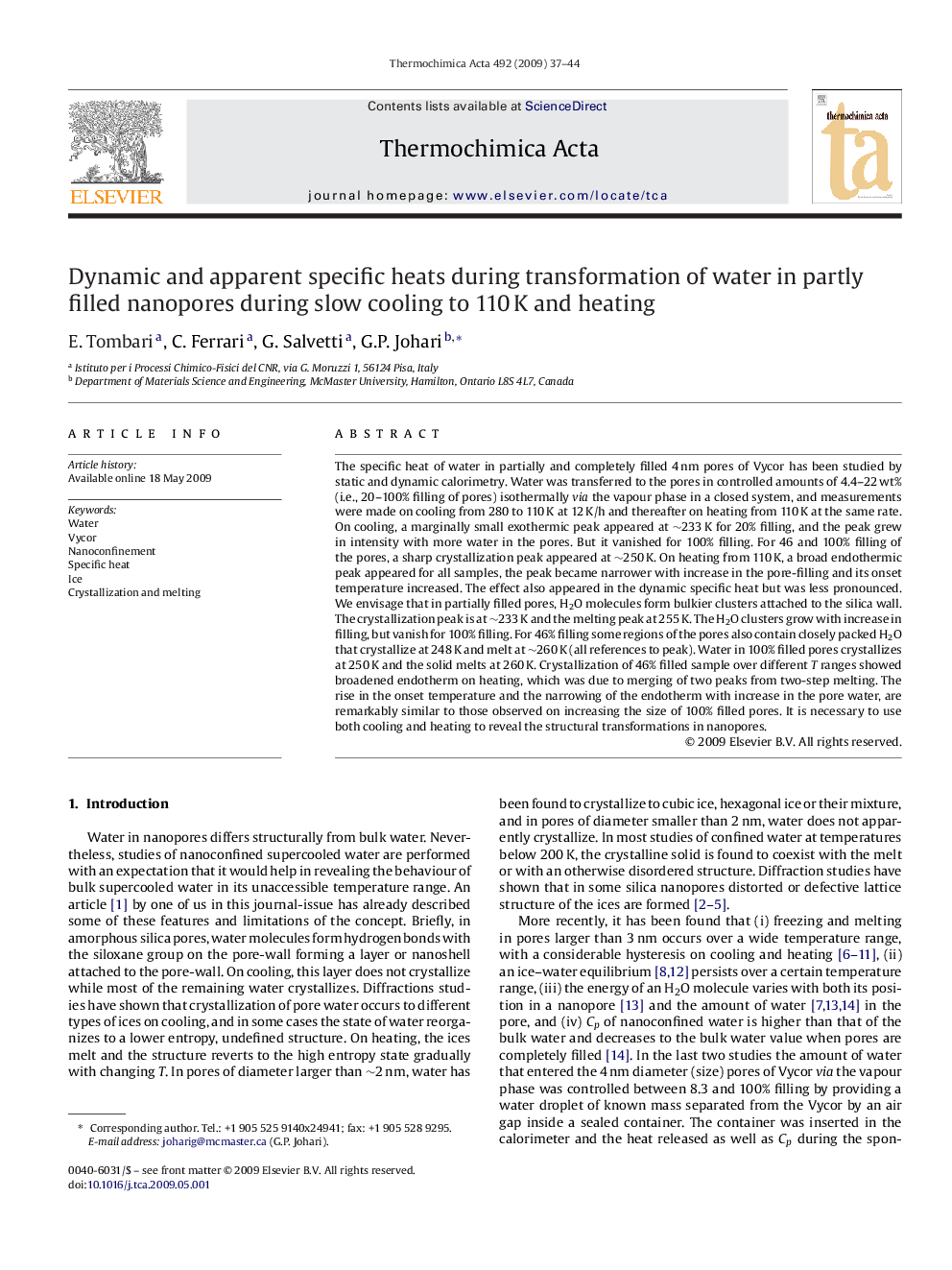| Article ID | Journal | Published Year | Pages | File Type |
|---|---|---|---|---|
| 675088 | Thermochimica Acta | 2009 | 8 Pages |
The specific heat of water in partially and completely filled 4 nm pores of Vycor has been studied by static and dynamic calorimetry. Water was transferred to the pores in controlled amounts of 4.4–22 wt% (i.e., 20–100% filling of pores) isothermally via the vapour phase in a closed system, and measurements were made on cooling from 280 to 110 K at 12 K/h and thereafter on heating from 110 K at the same rate. On cooling, a marginally small exothermic peak appeared at ∼233 K for 20% filling, and the peak grew in intensity with more water in the pores. But it vanished for 100% filling. For 46 and 100% filling of the pores, a sharp crystallization peak appeared at ∼250 K. On heating from 110 K, a broad endothermic peak appeared for all samples, the peak became narrower with increase in the pore-filling and its onset temperature increased. The effect also appeared in the dynamic specific heat but was less pronounced. We envisage that in partially filled pores, H2O molecules form bulkier clusters attached to the silica wall. The crystallization peak is at ∼233 K and the melting peak at 255 K. The H2O clusters grow with increase in filling, but vanish for 100% filling. For 46% filling some regions of the pores also contain closely packed H2O that crystallize at 248 K and melt at ∼260 K (all references to peak). Water in 100% filled pores crystallizes at 250 K and the solid melts at 260 K. Crystallization of 46% filled sample over different T ranges showed broadened endotherm on heating, which was due to merging of two peaks from two-step melting. The rise in the onset temperature and the narrowing of the endotherm with increase in the pore water, are remarkably similar to those observed on increasing the size of 100% filled pores. It is necessary to use both cooling and heating to reveal the structural transformations in nanopores.
